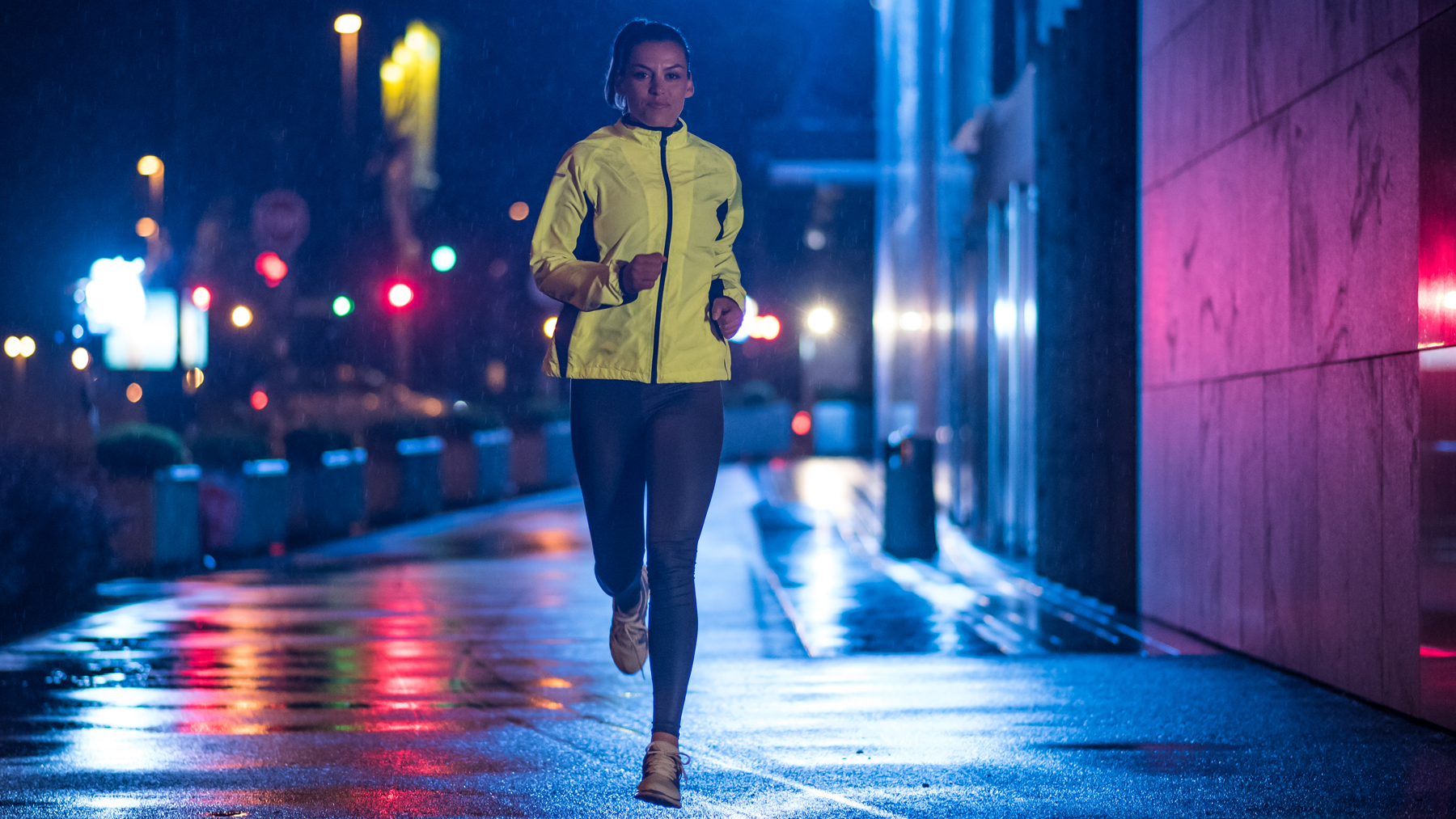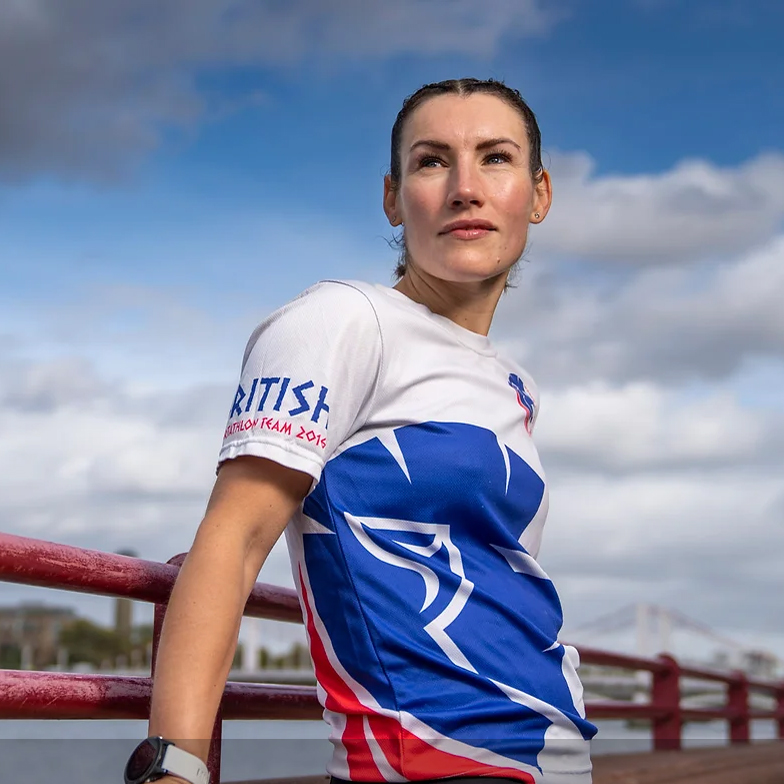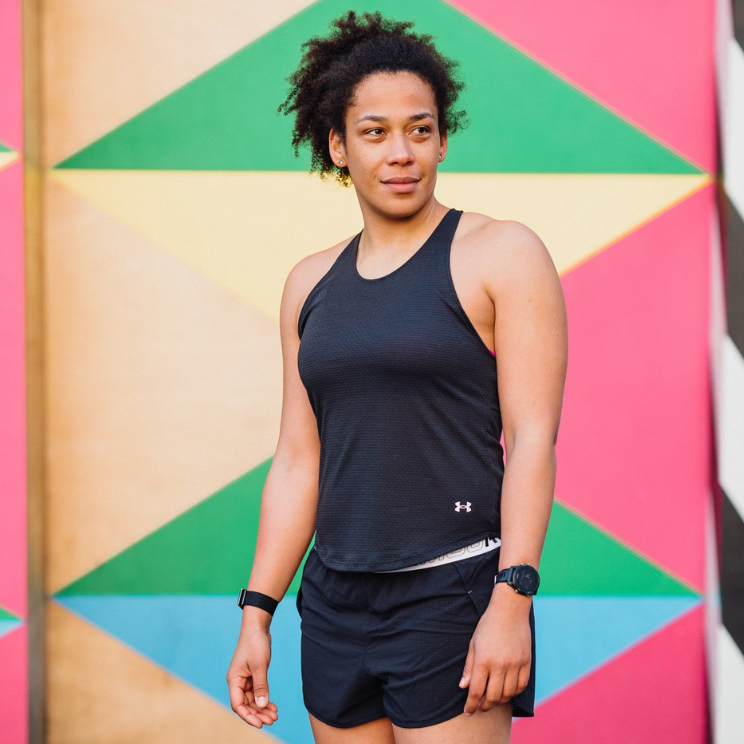9 ways to stay safe while running in the dark
How to keep safe on runs when the days get shorter

While some may prefer running in the winter months, grateful for the cooler temperatures, other runners will be contemplating how they’re going to keep up with running when there are fewer daylight hours available.
As the days and nights grow darker, runners face a range of challenges, including the risk of getting lost, navigating unpredictable winter weather, and being vigilant around increased safety concerns in the dark, when fewer people are around.
For many dedicated runners, taking a break during the darker months isn't an option. Whether you're prepping for a race, following a training plan on one of the best running apps, or simply loving the sport for the outdoor escape and mental clarity it provides — you don't want to let the dark steal this from you.
9 ways to stay safe while running in the dark
As a female runner who doesn't enjoy running in the dark but tries hard to make it as safe and enjoyable as possible, I've picked up some good tactics along the way. You'll find these below alongside some practical advice from a panel of running experts.
1) Arrange to run with a friend
Nine times out of ten, you have a friend who is also trying to keep up with training or leisurely runs in the darker months. Why not team up for a morning trail or chatty evening run? Failing that, look into joining a local run club. Running has soared in popularity since lockdown, so it's now much easier to find groups tailored to all abilities.
If you were to encounter an injury or other emergency during your run, having a friend or group of runners with you means that there's someone who can provide help or call for assistance.
Ultra runner of ten years, and founder of SheRACES, Sophie Power, shared with us what keeps her going and safe over Winter. One of her tips was, “I arrange to do a night trail run with a friend so we are both committed to show up.”
As Power noted, it's easier to stick to your running routine when you have a friend waiting for you. This accountability can help you maintain your fitness and stay consistent during the winter months. Plus, the winter months can be isolating, and running with a friend provides an opportunity for social interaction.
Sign up to get the BEST of Tom's Guide direct to your inbox.
Get instant access to breaking news, the hottest reviews, great deals and helpful tips.

2) Make yourself visible
“Always wear reflective gear, if not reflective, as bright as possible!” running coach Emma Kirk-Odunubi told us.
Let’s face it, winter running is not sexy, and safety is the number one priority, so if that means wearing a head lamp or dressing yourself in luminous clothing, just do it. You won’t be the only runner blinding the morning dog walkers with your bright yellow windbreaker and socks.
Power added that her running watch has a strobe function which also makes her more visible in addition to high visibility clothing. I can vouch for this: I run wearing the Garmin Fenix 7S, which can activate a strobe light for those darker runs.
3) Run against traffic
High vis clothing is a good way to be visible to traffic but it’s also a good idea to run with traffic coming towards you.
When you run against traffic, you can see oncoming vehicles, cyclists, and potential hazards, and if you encounter a vehicle that is not giving you sufficient space, running against traffic allows you to move off the road to the opposite shoulder or into a safe area more easily.
4) Tell someone where you are going
For both you and the person you inform, knowing that someone is aware of your plans and safety can provide peace of mind and of course, make it easier for someone to find you if you do get into any trouble.
Many of the best running watches have functions that allow you to add emergency contacts and detect falls.

5) Train on the treadmill
It’s a controversial one for runners, as some like myself, are not a big fan of treadmill running. (In fact, we did a whole story on treadmills vs. running outside.) While the idea of getting a generous dose of fresh air and immersing myself in nature is more appealing to me, earlier sunsets and unfavorable weather can limit the scenic experience. That's when the treadmill becomes a reliable Plan B.
Power was a big advocate for treadmill running when we asked her if it is still an effective way to train. “I really enjoy being able to easily mix up a workout with different inclines (on a treadmill) - hiking a steep hill can raise the heart rate just as high as a fast running interval. It's definitely mentally harder to do a long run on a treadmill, but it's perfect for interval sessions, short tempos or recovery runs.”
Tasha Thompson, founder of Black Girls do Run, agreed that the best treadmills are good for interval sessions but she is not friends with the exercise machine. See below to see how she fits her runs in when it's darker out.
6) Run your commute
Thompson who has been a runner for more than 20 years says she often opts for running her commute to work. If you live too far from your work to do this, she recommends running part way and hopping on public transport for the rest of the way.
Depending on what time you travel into work it may very well still be dark at this time so do ensure to wear high vis and try to avoid quieter, less lit areas en route.
7) Avoid poorly lit areas
Where you can, avoid routes that are poorly lit. It goes without saying that running in the dark can make you more vulnerable to potential threats.
Where possible, plan your runs during daylight hours, such as in the morning or early evening when there is more natural light. Alternatively, you could check out your local sports centers to see if they have a track that is lit up at night with flood lights.
8) Take your phone
Running is an excellent way to unplug and connect with nature. However, when running in the dark, it's wise to carry your phone securely, providing a means of communication and a backup for navigation if your running watch runs out of power.
9) Avoid loud music
Running in the dark already weakens your ability to see and react to potential hazards. Loud music can further reduce your awareness of your surroundings by drowning out important sounds, such as approaching vehicles, cyclists, or pedestrians.
If you can’t imagine running with your own thoughts then at least the best running headphones that allow you to hear your surroundings as well. If I do want to have some music with me when it's dark, I wear the Jabra Elite 7 Active’s which has a ‘Hear Through' to help me stay in touch with my surroundings.

Hopefully incorporating these safety measures and tips into your nighttime or early morning running routine can help you to continue to enjoy running while staying safe and well-prepared.
Please note, only run in the dark if you genuinely feel safe and comfortable doing so; never push yourself if you don't. Take a moment to check out our roundup of the best treadmills if you want to browse through a solid indoor alternative to outdoor running.

Power is an ultra runner of ten years competing in more than 40 marathons and ultras. She also is the founder of SheRACES, a global network of champions, driving change to support female athletes.

Strength and conditioning coach and Under Armour ambassador who has helped participants complete ultra running Threshold events.

Thompson has been running for more than 20 years and founder of Black Girls do Run UK.
More from Tom's Guide

Jessica has been a fitness writer at Tom’s Guide since 2023, bringing three years of experience writing about health, fitness, and the great outdoors. Her passion for exercise began during her childhood, where she spent weekends hiking and competing in local athletics club events. After earning a master’s degree in journalism from Cardiff University, Jessica found the perfect way to combine her love of storytelling and fitness into a career.
Jessica is passionate about testing fitness gear and tech, using her reviews to help readers make informed buying decisions. She ran her first marathon in April 2024, finishing it in 3 hours and 48 minutes. Through her training, she’s developed a deep understanding of what it takes to grow as a runner, from effective workouts and recovery techniques to selecting the right gear for every challenge.
When she’s not at her desk, Jessica enjoys spending time in the kitchen crafting new recipes, braving cold water swims and hiking.
